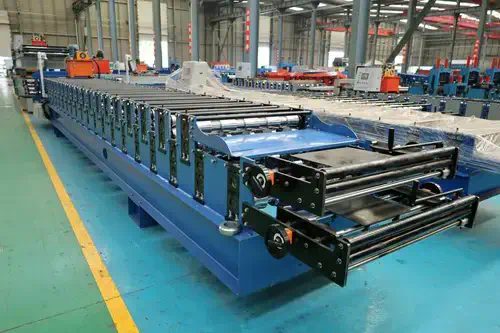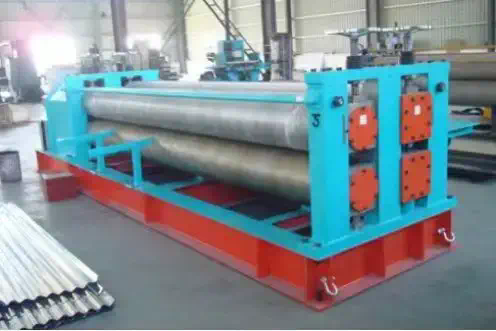CNC (Computer Numerical Control) metal cutting is a critical process in modern manufacturing, enabling the precise and efficient production of complex metal parts. The advent of CNC technology revolutionized metalworking by automating and refining cutting processes that once required significant manual intervention. Today, CNC metal cutting encompasses a variety of techniques, each suited to different materials, designs, and applications. These techniques include milling, turning, laser cutting, plasma cutting, waterjet cutting, and electrical discharge machining (EDM). Each method has its own advantages, limitations, and ideal use cases, contributing to the vast capabilities of CNC machining in the metalworking industry.
CNC milling is one of the most versatile and widely used CNC metal cutting methods. It involves the use of rotating cutting tools to remove material from a workpiece, producing parts with high precision and intricate geometries. Milling machines can perform a range of operations, from simple cutting to complex contouring, making them indispensable in industries such as aerospace, automotive, and electronics. The flexibility of CNC milling machines allows for the production of parts in various sizes and shapes, including those with tight tolerances and fine details.
CNC turning, another essential metal cutting process, involves the rotation of the workpiece while a stationary cutting tool shapes it. This method is particularly effective for producing cylindrical parts, such as shafts, bolts, and nuts. CNC lathes, the machines used for turning, can achieve high levels of precision and surface finish, making them ideal for applications where dimensional accuracy and smooth surfaces are critical. CNC turning is commonly used in the production of components for the automotive, aerospace, and medical industries.
Laser cutting is a non-contact CNC metal cutting technique that uses a high-powered laser beam to melt, burn, or vaporize material. The precision and speed of laser cutting make it a popular choice for cutting thin sheets of metal, particularly in industries that require intricate designs and clean edges, such as electronics and jewelry manufacturing. Laser cutting is highly accurate and capable of producing complex shapes with minimal material waste. However, it is generally limited to cutting thinner materials, as the laser’s power diminishes with increased material thickness.

Plasma cutting is another non-contact CNC metal cutting method, which employs an electrically conductive gas (plasma) to cut through metal. Plasma cutting is well-suited for cutting thick materials, particularly in industries such as construction, shipbuilding, and heavy machinery manufacturing. Unlike laser cutting, plasma cutting can efficiently cut through thicker metals, including steel, aluminum, and copper. It is also faster than many other cutting methods, though it may produce a rougher edge, requiring additional finishing in some applications.
Waterjet cutting is a versatile CNC metal cutting process that uses a high-pressure stream of water, often mixed with an abrasive material, to cut through metal. Waterjet cutting is known for its ability to cut a wide range of materials, from soft metals like aluminum to hard materials like titanium and stainless steel. One of the key advantages of waterjet cutting is that it does not generate heat, making it ideal for cutting heat-sensitive materials that might otherwise be deformed or damaged by other cutting methods. Waterjet cutting is widely used in the aerospace, automotive, and defense industries for applications where precision and material integrity are paramount.
Electrical Discharge Machining (EDM) is a specialized CNC metal cutting process that uses electrical sparks to erode material from a workpiece. EDM is particularly effective for cutting hard metals and creating complex shapes that would be difficult to achieve with traditional cutting methods. It is commonly used in the production of molds, dies, and other high-precision components in industries such as aerospace, automotive, and electronics. EDM can produce parts with extremely tight tolerances and fine surface finishes, making it an essential process for high-precision manufacturing.
Each of these CNC metal cutting techniques offers distinct advantages and is suited to specific applications. The choice of cutting method depends on factors such as Types of CNC metal cutting material being cut, the required precision, the complexity of the design, and the production volume. As CNC technology continues to advance, the capabilities of these cutting methods are constantly being enhanced, enabling manufacturers to produce increasingly complex and high-quality parts.
In addition to the cutting methods themselves, the tools and machines used in CNC metal cutting play a crucial role in determining the quality and efficiency of the final product. CNC machines are equipped with advanced software that allows for precise control of the cutting process, ensuring that parts are produced to exact specifications. These machines can be programmed to perform a wide range of operations, from simple cuts to intricate patterns, with minimal human intervention. The use of high-quality cutting tools, such as end mills, drills, and inserts, further enhances the accuracy and efficiency of CNC metal cutting.
The integration of computer-aided design (CAD) and computer-aided manufacturing (CAM) software with CNC machines has further revolutionized the metal cutting industry. CAD software allows designers to create detailed digital models of parts, which can then be converted into machine-readable code by CAM software. This code is used to control the CNC machine, guiding it through the cutting process to produce the final part. The combination of CAD/CAM software and CNC technology has greatly increased the speed and accuracy of metal cutting, reducing the time and cost required to produce complex parts.

The use of CNC metal cutting is not limited to large-scale industrial manufacturing; it is also widely used in smaller workshops and by hobbyists. CNC machines have become more accessible and affordable, allowing small businesses and individuals to produce custom parts with high precision. This democratization of CNC technology has led to an increase in innovation and creativity in the metalworking field, as more people have the tools and knowledge to bring their ideas to life.
In addition to its applications in traditional manufacturing industries, CNC metal cutting is also playing a growing role in emerging fields such as additive manufacturing and 3D printing. While these technologies are often associated with the creation of plastic parts, they are increasingly being used to produce metal components as well. CNC metal cutting is used in conjunction with these processes to refine and finish parts, ensuring that they meet the necessary specifications and quality standards.
The environmental impact of CNC metal cutting is another important consideration in modern manufacturing. As sustainability becomes an increasingly important factor in industrial processes, manufacturers are looking for ways to reduce waste and energy consumption in CNC metal cutting. Advances in cutting tools, machine efficiency, and material recycling are helping to minimize the environmental footprint of CNC metal cutting. For example, waterjet cutting produces no hazardous waste and uses a minimal amount of water, making it one of the more environmentally friendly cutting methods. Similarly, the use of high-efficiency CNC machines and cutting tools can reduce energy consumption and material waste, contributing to more sustainable manufacturing practices.
The future of CNC metal cutting is likely to be shaped by continued technological advancements, as well as the increasing demand for precision, efficiency, and sustainability in manufacturing. Innovations such as multi-axis CNC machines, advanced cutting tools, and artificial intelligence-driven process optimization are expected to further enhance the capabilities of CNC metal cutting. These advancements will enable manufacturers to produce even more complex and high-quality parts, meeting the evolving needs of industries ranging from aerospace to medical devices.
CNC metal cutting is a vital and ever-evolving component of modern manufacturing. The various cutting methods available, from milling and turning to laser and waterjet cutting, offer manufacturers a wide range of options for producing precise and high-quality metal parts. As technology continues to advance, the capabilities of CNC metal cutting will only grow, enabling manufacturers to meet the increasingly complex demands of the global market. Whether in large-scale industrial production or small-scale workshops, CNC metal cutting remains at the forefront of metalworking technology, driving innovation and shaping the future of manufacturing.





